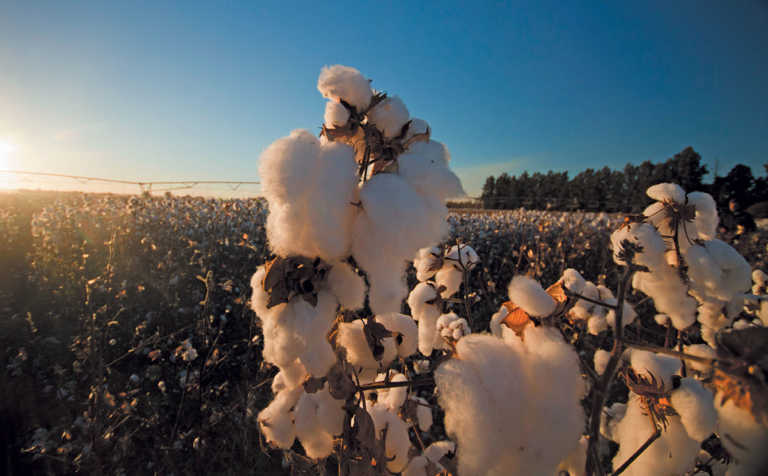
Photo: FW Archive
What’s the difference between the Southern African Sustainable Textile and Apparel Cluster (SASTAC) and the Sustainable Cotton Cluster?
On 1 April 2014, the Department of Trade and Industry [DTI] officially launched a five-year plan to establish a national textile cluster, SASTAC, supported by a R200-million grant fund. Its aim was to improve capacity and competitiveness and to create jobs in the cotton, textile and apparel industry value chains.
The cotton industry formed the Sustainable Cotton Cluster (SCC) in May 2014 to serve the cotton-specific interventions. It’s made great progress, and there’s now a big drive to get the other fibres on board.
The SCC brings together the entire cotton supply chain under one umbrella: farmers, ginneries, yarn manufacturers, dyers, finishing plants, weavers, retailers and consumers.
The stakeholders are working together to improve the economic, social and environmental sustainability of the cotton industry.
What is the Integrated Supply Chain Programme?
SASTAC has developed a supply-chain traceability and procurement platform, which offers full traceability and visibility of the value chain from farm to retail.
The Mr Price Group has been actively involved in the SCC since its inception, and served as the pilot for the first Integrated Supply Chain Programme (ISCP) in 2015. The ISCP is driven by retail demand and is built on virtual partnerships among supply chain stakeholders, from farm to retail. It supports ‘near sourcing’ and ‘quick response’ and provides for supply chain transparency, price surety and stakeholder trust.
Since the ISCP pilot, Edcon, Clicks and Woolworths have come on board. What’s convincing retailers to join the SCC?
It’s now well known that the model offers retailers essential benefits like proximity to market, speed to market and readiness. Local raw material sourcing and production also minimises risk and offers local beneficiation, job creation and investment in latest technology.
It gives participants in the supply chain access to shared production inputs and resources, as well as improved channels to market, due to price stability and supply certainty.
What cotton value chains have been created?
The cotton cluster has established 11 value chains on items made with 100% cotton. Product lines like T-shirts, chinos, towels and underwear have been implemented. A lot of local businesses are involved and these lines have already created value of over R2 billion.
Has the cotton industry grown or contracted since the SCC was launched?
Production has increased more than sevenfold from 25 000 bales in 2013, to roughly 180 000 bales this season.
We’ve seen investment on the ginning side. The Loskop Cotton Gin in Marble Hall has been replaced with a totally new gin with increased capacity; and another gin in Koedoeskop, Limpopo, is being erected.
The capital investment in farming and ginning amounts to over R200 million.
What growth are you seeing on farms?
Farmers are buying harvesting machines. Most are the latest technology and consolidate picking and baling. This eliminates a lot of labour-intensive activities and makes the farmer more productive and cost-effective, especially in the case of dryland cotton production.
The only problem is cost: top-of-the-range cotton pickers cost between R9 million and R11 million. They harvest 15ha/day to 20ha/day, so you need at least 1 000ha under irrigation to make the investment viable.
How many jobs have been created in four years?
The Bureau for Food and Agricultural Policy estimates that for every 1ha of cotton harvested manually, 1,3 jobs are created within the value chain. However, where the crop is harvested mechanically, this drops to about 0,3 jobs/ha.
We have roughly 38 000ha planted to cotton this season, up from 7 500ha in 2014, and estimate that this has created over 5 500 jobs from farm to retail. The majority of jobs have taken place at farm and gin levels.
Where are South Africa’s cotton growing areas located?
In Limpopo, Northern Cape, North West, KwaZulu-Natal and Mpumalanga. The industry has about 150 commercial farmers and 1 300 small growers, who farm roughly 5 000ha on 2ha to 5ha plots.
What funding is there for small farmers?
During the 2017/2018 season, five cotton projects in three provinces were funded. A total of 4 500ha was planted to cotton and 1 000 farmers were supported.
How much local cotton have retailers bought?
Retailers have committed to about 8 000t of lint in the current season.
How is the local cotton price derived?
It’s derived from the international import parity price which has always served as an indicator for local price determination. The local price is currently lower than the imported price for cotton.
This has predominantly been the case since the Cotton Cluster was initiated four years ago.
What are the constraints to growth in the industry?
One of the biggest bottlenecks is the fact that local spinning and weaving capacity is almost 100% utilised.
We need more investment in harvesting, and spinning and weaving technologies if we are to compete globally.
What are your ultimate goals for the cotton industry?
The potential to increase production to record levels is possible, especially with the availability of the latest biotechnology. We also want to increase the local beneficiation of cotton to a level where we can do import substitution of 50% on four basic retail items, such as T-shirts, towelling, chinos and underwear.
This will lead to the creation of more than 75 000 new jobs and an injection of almost R10 billion into the economy.
Phone Cotton SA on 012 804 1462.









